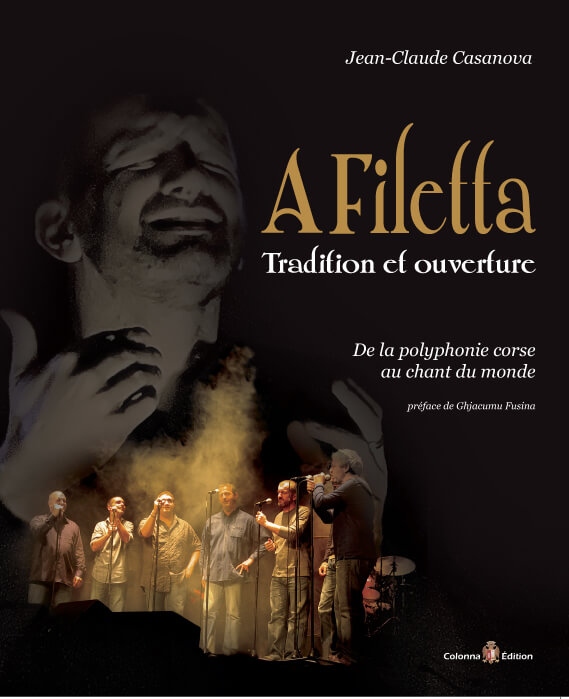A Filetta : Les concerts 2016
Tous les concerts de l'année 2016
Février 2016
Je 04 Le Mans, Les Quinconces - Danse, Memoire, Danse avec P. Fresu et D. di Bonaventura
Ve 05 Bron (69) Espace Culturel Albert Camus - Danse mémoire, danse
Sa 06 Hordain (59) Salle Nelson Mandela - Danse mémoire, danse
Di 07 Paris, Alhambra - Festival Au Fil des Voix - Castelli
Ve 19 Perth (Aus) St George's Cathedral - Castelli
Sa 20 Perth (Aus) St George's Cathedral - Castelli
Je 25 Perth (Aus) Heath Ledger Theatre - Apocrifu
Ve 26 Perth (Aus) Heath Ledger Theatre - Apocrifu
Sa 27 Perth (Aus) Heath Ledger Theatre - Apocrifu
Avril 2016
Ma 26 : Calvi, Chez Tao à Calvi
- Rencontre « A core datu »
Me 27 : Calenzana, Chapelle Sainte Restitude - Concert-récit « A core datu »
Mai 2016
Ma 3 Malines/Mechelen (B)
Conversation(s) (A Filetta & Fadia Tomb El-Hage)
Sa 14 Pioggiola,
Eglise Santa Maria Assunta « A core datu »
Ma 17 Rouen (76), Danse Mémoire, Danse (A Filetta, Daniele di Bonaventura & Paolo Fresu)
Je 19 Calvi , Cathédrale Saint Jean Baptiste -
21h30 - Castelli
Ma 31
Aix-les-Bains (73), Festival Les voix du Prieuré - Castelli
Juin 2016
Je 2 Aregno, Eglise de la Trinité « A core datu »
Ve 3 Calenzana, Chapelle Sainte Restitude « A core datu » : Concert-récit
Me 22 Lama, salle du Stallo « A core datu »
Je 23 Calenzana, Chapelle Sainte Restitude « A core datu » Concert-récit
Juillet 2016
Lu 4 Abbaye Saint Victor, Marseille (13) Concert de soutien SOS MÉDITÉRRANÉE (Castelli)
Me 6 Krakow (PL) - Festival EtnoKraków/Rozstaje - Castelli
Ve 8 Perugia (It.), Umbria Jazz Festival - Danse Mémoire, Danse
Sa 9 Bruxelles (B.) Brosella Folk & Jazz Festival - Danse Mémoire, Danse
Me
20 Propriano, Eglise - Castelli
Ve 22 Lessay (50), Les Heures Musicales de l'Abbaye de Lessay - Castelli
Je 28 Lama, Eglise - Medea (dans le cadre de A Festa di a lingua) / 19h00
Ve 29 Bastia, Festival I Sulleoni - Conversation(s)
Di 31 Belgodere, Eglise - Castelli
Août 2016
Lu 1 Calvi, Cathédrale Saint Jean Baptiste - Castelli
Ma 2 Morsiglia, Couvent -
21h00 - Castelli
Lu 8 Lumio, Eglise -
21h30 - Castelli
Je 11 Cervione, Cathédrale - Castelli
Ve 19 Calenzana, Rencontres de musiques classique et contemporaine
Septembre 2016
Je 8 Calvi, la Poudrière - Rencontre « A core datu »
Ve 9 Calenzana, Chapelle Sainte Restitude « A core datu » Concert-récit Medea
Ma 13-Sa 18 Calvi, XXVIIIes Rencontres polyphoniques
Ve 30 Arnhem (NL) In Memoriam - Sidi Larbi Cherkaoui
Octobre 2016
Sa 01 Arnhem (NL) In Memoriam - Sidi Larbi Cherkaoui
Ma 04 Hengelo (NL) In Memoriam - Sidi Larbi Cherkaoui
Me 05 Den Haag (NL) In Memoriam - Sidi Larbi Cherkaoui
Je 06 Eindhoven (NL) In Memoriam - Sidi Larbi Cherkaoui
Ma 11 Nijmegen (NL) In Memoriam - Sidi Larbi Cherkaoui
Je 13 Doetinchem (NL) In Memoriam - Sidi Larbi Cherkaoui
Sa 15 Apeldoorn (NL) In Memoriam - Sidi Larbi Cherkaoui
Sa 19 Bastia - Castelli, Les Musicales de Bastia
Ve 21 Paris, Cité de la Musique - Puz/zle - Sidi Larbi Cherkoui
Sa 22 Paris, Cité de la Musique - Puz/zle - Sidi Larbi Cherkoui
Di 23 Paris, Cité de la Musique - Puz/zle - Sidi Larbi Cherkoui
Sa 26
Tbilisi (Georgie) Concert Hall,
- Castelli
Décembre 2016
Ve 02 Saint-Jean-le-Centenier (07) 20h30 - Concert A Filetta
Sa 3
Avignon (84), Eglise St Agricol - 20h30
Di 4 Les Baux de Provence, Eglise St Vincent -
15h00
Me 14 Leeds (GB) - Concert A Luce Sì Tù (Christmas)
Sa 17 et Di 18
Bruxelles (B) Puz/zle - Sidi Larbi Cherkaoui
Lu 19 Tournai (B) - Concert Castelli
Les concerts des autres années :
2017 2016 2015 2014 2013 2012 2011 2010
2009 2008 2007 2006 2005 2004 2003 2002
2001 2000 1999 1998 1997 1995 1991

Concerts 2016 : Les compte-rendus
Jeudi 4 février 2016, Le Mans
avec Paolo Fresu (trompette - bugle) et Daniele di Bonaventura (bandonéon) :
Après Mistico Mediterraneo et L'isula scunnisciuta, nous, A Filetta, Paolo Fresu (trompette, bugle) et Daniele di Bonaventura (bandonéon) avons décidé de reprendre la route ...
Il s'agit là d'un travail musical et vocal ayant pour thème les regards croisés de deux hommes ayant marqué le 20ème siècle
: Aimé Césaire, écrivain, poète, dramaturge d'origine martiniquaise et Jean Nicoli, enseignant, résistant, exécuté en 1943 à Bastia par l'occupant fasciste italien.
Que peuvent bien avoir en commun ces deux hommes ?
Tous deux sont insulaires, attachés à leur terre natale, et homme du refus : ils rejettent très clairement le colonialisme et les souffrances infligées aux plus faibles.
Communistes, ils dénoncent les méfaits du capitalisme qui broie hommes et civilisations.
Le moment venu, ils s’engagent contre le fascisme et le nazisme et défendent inlassablement leurs idées ; « L’idée, cette mouche importune » écrira Césaire dans son « discours sur le colonialisme ».
Si nous avons décidé, dans ce nouveau spectacle de rapprocher ces deux penseurs lumineux empreints d’humanisme, c’est tout simplement pour rappeler encore et encore que derrière la grandeur de ces hommes que l’on se plaît à célébrer pour leurs engagements et leur sacrifice, il y a l’idée pour et par laquelle ils vivent et meurent : celle d’un monde plus juste, plus libre, plus respectueux des différences, plus équitable et plus solidaire.
Nous, corses et italiens réunis, polyphonistes et jazzmen, tous musiciens enracinés, voix, trompette et bandonéon voulons contribuer à mettre en relief les idéaux et les rêves de ces « princes des nuées » en proposant une musique métissée qui n’est celle de personne précisément parce qu’elle est celle de tous.
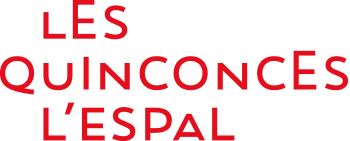

Début de soirée un peu mouvementé pour nous : retardés par un gros bouchon avant l'entrée sur l'A10, nous nous dirigeons vers l'Espal, dont l'adresse est indiquée sur notre réservation internet. Nous y arrivons enfin vers 19h45. Le parking est vide. Bizarre... Bon sang, le concert ne se déroule pas à l'Espal, mais aux Quinconces, en plein centre ville ! Le GPS a du bon ! Nous y sommes à 20h25, juste à temps pour le début du concert. Ouf !
Il aurait été vraiment dommage de rater ce concert. Bien que n'ayant plus joué ensemble depuis juillet dernier, les chanteurs d'A Filetta, Paolo et Daniele ont immédiatement retrouvé leurs marques et nous ont offert un fabuleux concert, avec notamment un magnifique morceau d'ouverture (I vostri sguardi), un bouleversant In sempiterna, et un extraordinaire duo entre Paolo et Daniele sur Se va la murga. Quels grands musiciens !
Les quelque 825 spectateurs de la magnifique salle des Quinconces ont réservé une ovation aux artistes, qui sont revenus deux fois pour Le Lac puis Gloria.
On attend avec impatience le disque pour se mettre tous ces morceaux en tête (l'enregistrement est prévu au 1er semestre de cette année !)
Pour patienter, je rappelle que de larges extraits ont été présentés dans Mezzo Voce l'an dernier, et que quatre morceaux (Africa, Un'antra isula, La costruzione delle cose et In sempiterna) ont été filmés à Grenoble l'année d'avant. Et enfin, que le projet "Danse mémoire danse" a fait l'objet d'un passionnant documentaire de Cathy Rocchi, "É giusto dire nò".

Concert recueilli en mémoire de grands hommes


Salle comble pour la soirée d'ouverture des Nuits de la Voix, jeudi, aux Quinconces avec un bel hommage des chanteurs corses au poète Aimé Césaire et au résistant Jean Nicolli. Intimiste et recueilli, souvent poignant. Nettement plus enjoué, sinueux et rythmé, quand le duo jazz Fresu - Di Bonaventura s'envolait à grands renforts d'effets électroniques, rendant l'ensemble réellement captivant. « Corses et Italiens, jazzmen et polyphonistes, commenta Jean-Claude Acquaviva, leader du sextet insulaire, nous avons voulu contribuer à mettre en relief les idéaux de ces princes des nuées. »
Source : http://www.ouest-france.fr/...
Vendredi 5 février 2016, Bron



Samedi 6 février 2016, Hordain

Dimanche 7 février 2016, Alhambra, Paris
Trois jours après le concert "Danse mémoire danse" au Mans, nous avons retrouvé A Filetta, cette fois pour un concert "Castelli" précédé d'une prestation des amis sardes de Cuncordu e Tenore de Orosei. Les chanteurs de cette double formation sont en quelque sorte les gardiens de ce chant sarde venu de la nuit des temps. Chants sacrés (a cuncordu) ou profanes (a tenore), leur répertoire et leur façon de chanter semblent immuables, même s'ils ne dédaignent pas inviter des instrumentistes (Ernst Reijseger, Paolo Fresu, Enzo Favata, les Voix bulgares...). Mais leur chant tellurique m'évoque avant tout la campagne sarde, les nuraghe et les domus de janas.
Tout en prenant ses racines dans la tradition polyphonique corse, A Filetta a au contraire toujours osé la création, estimant que la tradition se construit dans le présent. Le répertoire présenté ce soir en est un exemple évident. Créations pour le théâtre (les deux chants remarquables créés pour Pessoassion : Ùn nu a sò et U Guardiabanda), messes (Introit, Gradualia), et surtout deux merveilleuses créations sur un beau texte de Jean-Claude : Infine et In ogni addiu. L'éclatant chant de Noël Adeste fideles détonnerait presque dans ce contexte plutôt tout en retenue, s'il n'y avait le vibrant Tbiliso pour
conclure le concert.
Près de 40 ans après leurs débuts, ces « colporteurs en quête de l'agencement parfait » n'ont jamais été aussi proches de leur inaccessible étoile.
Ajoutons, pour terminer, les très belles paroles de Jean-Claude, citant le poème d'Aragon "J'entends j'entends" pour évoquer les attentats de 2015 et mettre en relation ce drame avec les autres drames qui se jouent tous les jours en Méditerranée, et rappeler que nous aussi aurions tous pu être des réfugiés.
Deux vidéos captées par Saïd Assadi :
Et les photos d'Elisabeth Melchior :
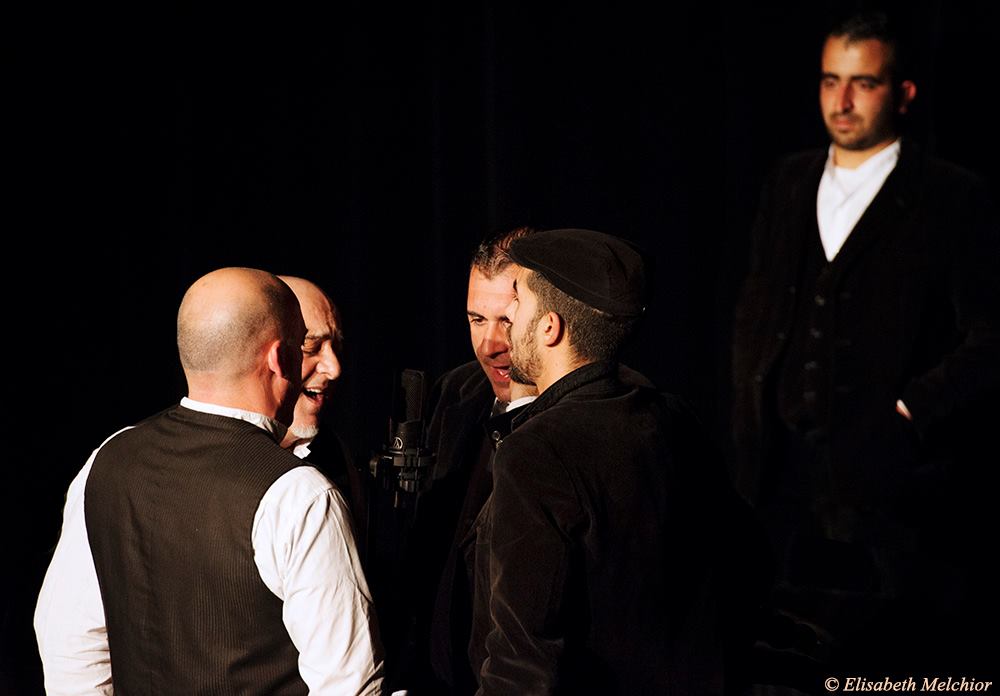
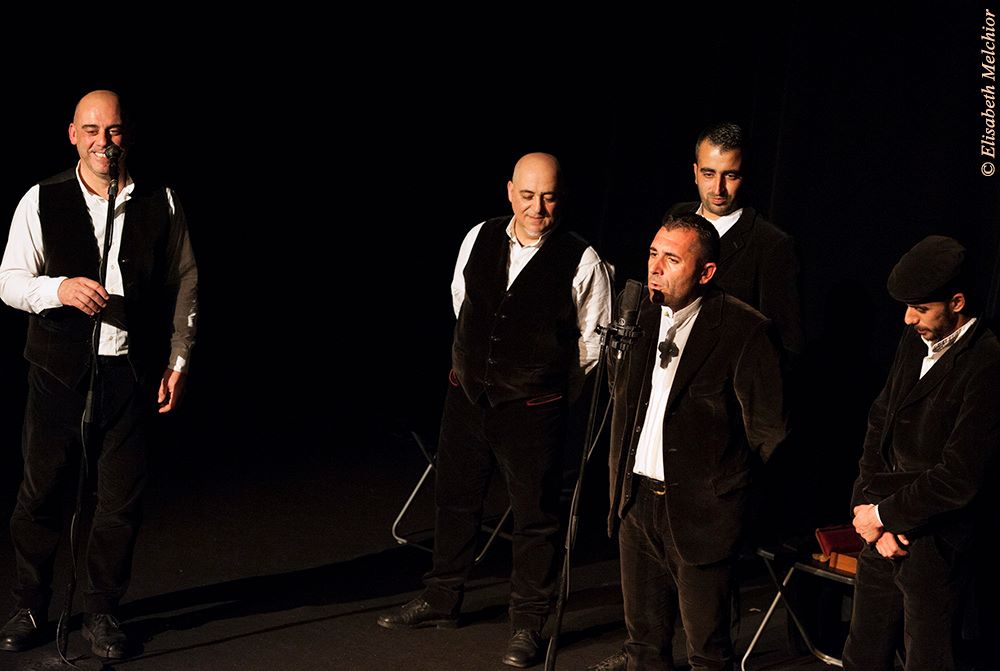




19 février, Perth, St. George's Cathedral

Giving voice to ancient tradition
Step into a bar or stumble upon a mountain fair somewhere in northern Corsica and you might find a group of men standing in a semicircle, leaning on each other’s shoulders with one hand cupped to their ears, singing a cappella in waves of rustic polyphony and soulful melismas.
This is the paghjella, the Corsican oral tradition of male part-singing, of which the six members of Corsican vocal ensemble A Filetta are complete masters. “So Perth audiences will hear the music we have been developing for more than 30 years now,” founding member Jean-Claude Acquaviva says.
Music that springs from the sacred and secular oral traditions that are their heritage and evolving into more modern, complex compositions, “oscillating between that oral tradition and contemporary writing”.
A Filetta — the name references a type of Corsican fern — was founded in 1978 amid nationalist efforts to preserve Corsica’s indigenous culture. As a child Acquaviva was always fascinated by archaic chants said to have been sung by shepherds in days of old. After studying classical guitar and composition, he joined A Filetta at the age of just 13.
“After all these years I have been in contact with many different oral traditions, as well as other artists, composers and performers,” he says. “Each encounter has left a strong mark (on me) and I never, ever wanted to restrict my creative universe.”
The paghjella is traditionally sung by three voices which enter at different intervals, overlapping and undulating to build up a sonorous landscape over which a much higher fourth voice soars, thus linking heaven and earth, sacred and profane. Acquaviva’s contemporary touches align A Filetta’s approach with that of such groups as Voce di Corsica, which are firmly rooted in tradition while admitting experimentation less extreme than other ensembles such as Les Nouvelles Polyphonies Corses.
Acquaviva elaborates. “First of all, it is important to be precise that the polyphony we practice only represents a small part of Corsican music.”
He admits the origins of this music are somewhat hazy given the strong oral tradition and lack of written testimonies.
“Let’s say it’s an a cappella singing/ chant that used to exist in a profane form before religious orders (notably Franciscans) took it over from the 13th century in order to complete the evangelisation of the island’s inhabitants,” he says.
He reiterates the importance of three- voice polyphony “characterised by a great freedom of interpretation because of a total absence of rhythmic pulse” and because of the melismas’ — vocal elaboration on one vowel — improvisation. “This music has been influenced by Renaissance madrigals and the sacred music introduced into Corsica by religious orders. But it has a less complex, more archaic architecture. It has remained rustic and natural.”
A Filetta’s concerts exclusively for the Festival will feature material from its latest album, Castelli, which, according to Britain’s The Guardian, features “a brooding, gently spooky piece from a French TV drama ... a throbbing, quietly thrilling dance song, a delicate hymnal-like piece written for a Polish Shakespearean project ... and laments for an air crash.”
Which all sounds more than one step removed from the rustic traditions of the paghjella. But as Acquaviva says “our music has always been welcomed with respect and enthusiasm because it translates that common goal to reach a precarious balance — perhaps imaginary — in which individuals merge in a single spirituality. We are glad to travel and share our soul with the world.”
A Filetta perform at St George’s Cathedral on Saturday and the Albany Entertainment Centre on Sunday.

Corsican singers soar in cathedral setting
William Yeoman - The West Australian - February 20, 2016, 8:20 am 4 starsThe six male singers of the Corsican a cappella vocal ensemble A Filetta are masters of the paghjella, which is traditionally sung by three voices that enter at different intervals, overlapping and undulating, before building up a sonorous landscape over which a much higher fourth voice soars, thus linking heaven and earth, sacred and profane.
St George’s Cathedral was thus the perfect venue for the group’s first-ever Australian concert in Perth last night. Drawing on material from their latest album Castelli, which in turn draws on music commissioned for various projects in the dance, theatre and cinematic realms, the six singers — Jean-Claude Acquaviva (founding member and composer), Francoise Aragni, Paul Giansily, Stephane Serra, jean Sicurani and Maxime Vuillamier — bewitched a near-capacity audience for over an hour.
Though given the cathedral setting, perhaps “transported to the heavenly realms” is a better description of the extraordinary effect the incredibly rich yet equally subtle singing had on listeners. Each number was short, and textures varied according to the techniques and the number of singers involved at any one time. Sacred texts in Latin also jostled for room with more earthy fare in Corsu or French.
But whether it was in the soaring, ecstatic melsimas of a solo tenor or the fluctuating counterpoints of two or three voices or the darker, growling drones of human pedal points, the overall effect was of music enveloped in tradition, stretching towards infinity yet palpably present in the here and now. My only regret is no printed program or translations were provided.
A Filetta perform at St George’s Cathedral on Saturday and the Albany Entertainment Centre on Sunday. The also appear in Apocrifu at the Heath Ledger Theatre Thursday 25 to Saturday 27 February.
See perthfestival.com.au
25 février, Perth, Apocrifu
Crossing the great divides

Apocrifu
Formerly a dancer with stellar Belgian outfit Les Ballets C de la B, Sidi Larbi Cherkaoui’s choreographic career kicked off with that company in 2000. Since then he has created more than 20 major works, some for his own troupe, Eastman, which he founded in 2010, and others for various European and American companies.
He was recently appointed artistic director of the Royal Ballet of Flanders, having achieved startling success, both as a choreographer and director at the age of just 39.
Preparing to interview Cherkaoui via Skype from his home in Antwerp then, I feel a thrill of nervous anticipation. In spite of his celebrity status, however, he is warm and down-to-earth. We are, periodically, interrupted by a cat whose tail waves insouciantly across the screen. “He gets jealous sometimes,” Cherkaoui explains.
In-between laughing at the cat’s antics, we talk about Cherkaoui’s 2007 work Apocrifu, billed as one of the highlights of the Festival. Featuring three dancers, a puppet and all-male Corsican vocal ensemble A Filetta, Apocrifu explores major ideological and religious texts.
The focus, Cherkaoui says, is on what has been lost from those texts. “At the time I made the work, one of my biggest concerns was the notion of transmission — what do we transmit to one another and what gets lost in transmission, misinterpreted or misunderstood.
Apocrifu’s set features many books, he says. “It’s almost like a library where all the books have been left behind. You can interpret it how you want, but my own projection on it is that maybe it is where all the books we felt were not important have been pushed. The work is about rejection, really ... which stories we reject, which stories are kept out of history and how (those stories) come back to haunt us.”
Cherkaoui describes Apocrifu as a post-9/11 work, which explains why the premise, with its focus on ideology and religion, feels timely.
“Most of the time people define each other as separate from each other, so you know, being a Muslim has nothing to do with being Christian, being Christian has nothing to do with being Jewish. In a way, what I try to do, because I am none of those things, is to show that there are a lot of similarities to that way of relating to a specific deity.”
The inspiration for Apocrifu, then, is personal as well as political. “It was made at the time when I questioned my own relationship towards spirituality,” Cherkaoui says. “As a kid I was raised Muslim. My mother was Catholic. I went to a school that was completely scientific and unreligious. I watched a lot of Japanese manga and anime, and movies of Bruce Lee, so I was influenced by Buddhist and Shinto culture and ways of looking at the world, very holistic. I’m vegan, I don’t drink alcohol — so there are a lot of things I have in my daily routine that made me wonder about how to connect the dots of reality, how to manage the spirituality of others and that of myself.”
Although Cherkaoui describes Apocrifu as “a very sad piece”, he talks about vocal ensemble A Filetta’s involvement in terms of joy.
“When I discovered A Filetta almost 14 years ago I was blown away by the beauty of the polyphonic singing, the notion that each of our voices is different but somehow, together, we generate an energy that goes beyond our individual voices,” he recalls. “I had the feeling if ever there was something like the voice of God, it would be polyphonic and it would have all those layers ... it would never just be one.”
Apocrifu’s three dancers are Yasuyuki Shuto, a classical dancer from the Tokyo Ballet; Dimitr Jourde, a French circus artist and contemporary and kathak dancer; and Cherkaoui himself.
“Each of us has a different element in our hands,” Cherkaoui says. “Dimitir is very earthbound, Yasuyuki is very much like air, flying, and I think I am more like water. I think we become manifestations of Judaism, Christianity and Islam, in a way: what came before, what comes in the middle and what came after. So it’s this trinity. It’s abstract but the energies of the three of us together bring about some sort of reality.”
The fourth character in Apocrifu is a Japanese Bunraku puppet. “The puppet is about the notion of feeling manipulated, and then there’s also the other aspect of the puppet, which is giving soul to something that, supposedly, doesn’t have one,” Cherkaoui says.
“I love that when the three of us work together, suddenly the puppet comes alive, it exists by our belief. And also, the way the puppet moves, from a choreographic perspective, is very interesting.”
There are so many dimensions to this work and, last but definitely not least, is the fact Cherkaoui himself performs in the work. “Even though most people know me as a choreographer, I have always been a passionate performer,” he says. “I still love performing.”
Apocrifu is at the Heath Ledger Theatre from February 25-27.
Dancer makes the word flesh
Sidi Larbi Cherkaoui uses body language to show how words can antagonise and divide people.
The acclaimed dance-maker said his show Apocrifu was as relevant today with religious and ideological intolerance as prevalent as it was in 2009 when he was compelled to create it.
Apocrifu combines classical and contemporary dance with circus, puppetry and choral singing on a set strewn with books from Marx and Mao to Christianity and Islam.
“I do love breaking boundaries between disciplines,” The Belgian-Moroccan choreographer said.
Apocrifu took its name from the term “apocrypha” – religious texts rejected as part of the sanctioned canonical faiths.
“For me it was a way of speaking about the things we reject in life and somehow get a life of their own because we reject them,” Cherkaoui said before Apocrifu’s opening at the Perth International Arts Festival tonight.
“Very often we are stuck with the notion of rejecting people because they seem to be from another upbringing or another way of looking at the world,” he said.
“We should turn it upside down and say, when someone has another point of view it is more interesting because it helps you broaden your own vision.”
Cherkaoui, a gay man with a mixed cultural heritage, has a Catholic mother but was raised as a Muslim.
Apocrifu was a response to his questions about finding a connection between different world-views and a certain despair about how best to manage the rejections that come in life, he said.
In Apocrifu, the contemporary dancer performs with Yasuyuki Shuto, a classically trained dancer from the Tokyo Ballet, and French circus artist Dimitri Jourde.
“In 2007 we came together as a band,” Cherkaoui said. “It was very interesting to come together and try to find a common language as people from very different physical disciplines and somehow taking rejection as a theme.”
“For me it has been a whole journey as a performer and as a choreographer to come together with people who will always keep broadening my vision.”
The dancers were a “holy trinity” who represented different ways of looking at the world and had to co-exist, sometimes rejecting one another and sometimes coming together, he said.
Apocrifu took much of its power from the Corsican male choral group A Filleta, whose different types of voices came together in polyphonic harmony, he said.
“If God would have a voice, it would sound like that.”
Hanging over the work, which did have its moments of lightness, was a sense of mourning and sadness about the world being “very difficult for people”.
“It is very hard to stay kind when the world is hard. This is something I am trying to convey. We have to stay kind and we have to give love back but it is very, very difficult because sometimes the world is really tough and it is understandable that at times people will not know how to give love back when you are treating them this way or that way.
As with the recent Pixar film Inside Out, Apocrifu sought to show that there was an important place for sadness but there also was a sense of resilience in the 70-minute piece.
“Whenever something is rejected it becomes something else, something new. It becomes the seed that can create a whole new forest.
“Throughout history every time someone tries to push something under the earth, it grows stronger and becomes a very strong tree.”
Apocrifu, an Australian exclusive, runs at the Heath ledger Theatre until Saturday.
Sublime beauty beyond the book
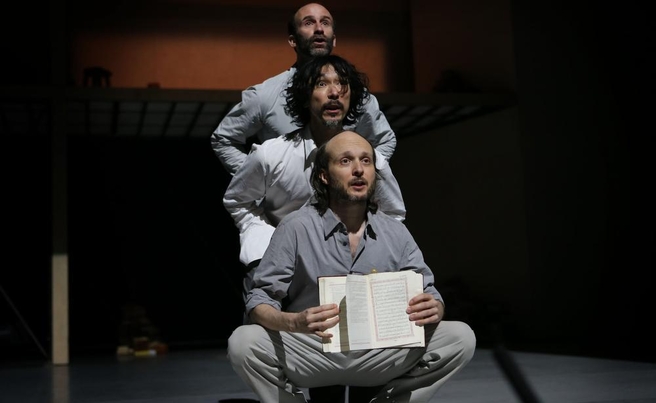
Picture: Megan Powell/ The West Australian.
DANCE
Apocrifu
Sidi Larbi Cherkaoui
4.5 stars
Heath Ledger Theatre
Review: Nina Levy
Watching Sidi Larbi Cherkaoui’s Apocrifu reminded me of reading a postmodern novel. The work has numerous strands and it’s up to the viewer to work out the relationship of the parts to each other, if any. There are moments of clarity, of confusion, of comedy ... and just when it seems as if nothing makes sense there are moments that are sublime.
Apocrifu’s starting point is the notion that all ideological and religious texts have equal merit, from the revered to the condemned ... not an obvious theme to investigate through movement. Into the mix, Cherkaoui adds an exploration of different dance languages, his own Belgian- Moroccan, contemporary-trained body pitted alongside French circus artist/dancer Dimitri Jourde and Japanese ballet-trained dancer Yasuyuki Shuto. At times the three manipulate a Japanese bunraku puppet, adding a fourth “style”.
While the final product is often engaging to watch, the former concept doesn’t translate clearly.
Apocrifu is often bemusing, yet a number of punters gave the work a standing ovation on opening night. So how does a work that seems to seek to confuse connect with its audience?
The answer begins with A Filetta, the all-male Corsican vocal ensemble that provides a cappella accompaniment to the work. The polyphonic songs, with lyrics ranging from traditional to contemporary, are nearly all composed by ensemble member Jean-Claude Acquaviva. At times Arabic sounding, at others madrigal-like, meditative chants are interspersed with songs of complex harmony.
Herman Sorgeloos’ set design incorporates a massive staircase and a loft, enabling the six singers to traverse the stage so that their voices variously complement, underpin, pour over and envelop the dancers. Every time another song began my heart would soar with the pure and perfect notes.
Take that sound and marry it with three dancers who move with panther-like fluidity and you’ve got the ingredients for some magic.
Shuto curves and flows, light and airy. Jourde appears boneless as he ripples and falls. Cherkaoui is a combination of serpentine limbs and incongruous gestures. The puppet sweeps through the air, leaps joyously, cheekily slaps the dancers.
A light-hearted trio sees the dancers in single file as arms, heads and books weave manic patterns. In duet, Cherkaoui and Jourde connect at the neck, their faces in constant motion around each other, snaking apart to return. Shuto and Jourde perform a similar duo, head to head.
The final moment of Aprocrifu, with its allusions to suicide, feels inexplicably dark in relation to the rest of the work. For me, the most moving scene came just before. To waves of song that ebb and flow from below, the dancers stand atop the staircase, their arms wings, their hands lotus flowers.
Apocrifu has a strange, almost inaccessible beauty. For fans of a cappella singing, the music alone is worth the ticket price. If you also love contemporary dance, it’s a must-see.
Apocrifu ends this Saturday.
Apocrifu
Sidi Larbi Cherkaoui
Heath Ledger Theatre
REVIEW NINA LEVY

26 avril, Chez Tao, Calvi, « A core datu »
Calvi : "A Filetta" à la rencontre de son public pour un voyage au cœur de la polyphonie
Rencontre inédite en mardi début de soirée dans la mythique Maison Tao dans la citadelle de Calvi entre le Groupe culturelle "A Filetta" et son public. Une rencontre intimiste souhaitée par le groupe pour faire partager son univers de la polyphonie déclinée sous toutes ses formes

Merveilleuse rencontre proposée que celle qu'une poignée de privilégiés a eu la chance de vivre en tout début de soirée de mardi.
Initiée par Jean-Michel De Marco, directeur de l'Office de tourisme de L'Ile-rousse et l'Office de Tourisme de Balagne, "A Core Datu" est une véritable invitation au cœur de la polyphonie.
Devant 80 personnes, Jean-Claude Acquaviva, leader du Groupe "A Filetta" remerciait la Maison Tao pour son accueil et les organisateurs d'avoir eu cette idée de proposer autre chose que le concert traditionnel et en permettant aux membres du groupe de faire partager leur univers.
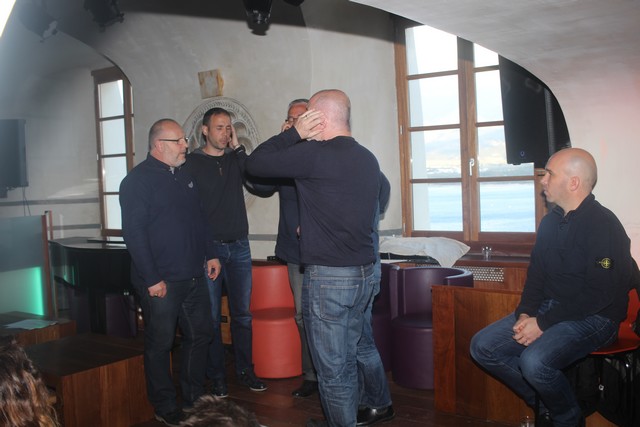
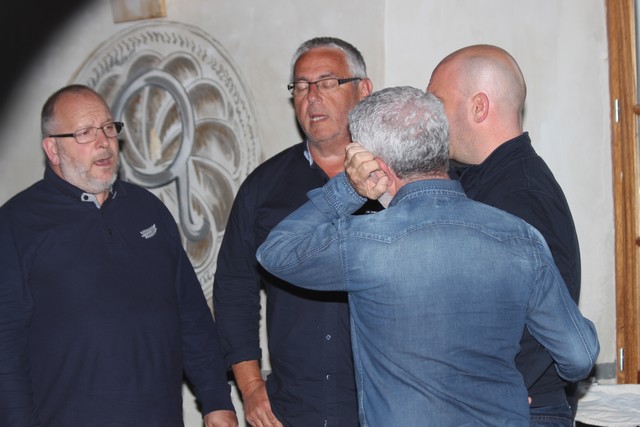



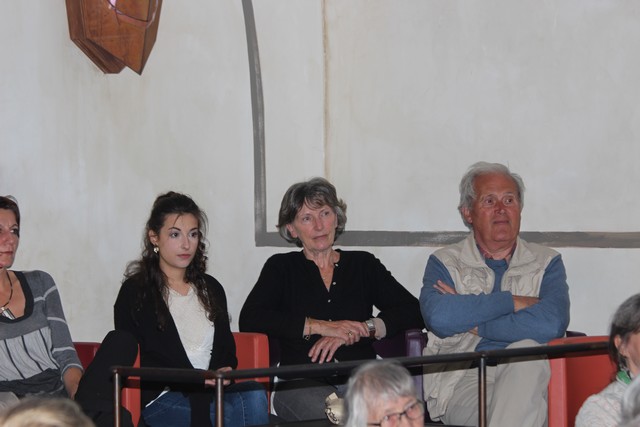
Avec amour et passion, Jean-Claude Acquaviva a pris le temps d'expliquer les différentes formes de la polyphonie avant d'interpréter avec le groupe des extraits de leur riche répertoire.
Une rencontre qui débutait par la Paghjella.
"S'initier à la Paghjella n'est pas très compliqué, la chanter est autre chose" devait dire Jean-Claude Acquaviva avant d'ajouter qu'il y avait une part d'improvisation, avant de se joindre au groupe pour une démonstration vocale.
Jean-Claude Acquaviva enchaînait sur les chants sacrés en expliquant l'origine avant d'interpréter avec ses compa gnons deux chants, l'un qui trouve ses origines à Moncale et l'autre dans le Niolu.
Cette soirée enrichissante et inédite s'est ainsi poursuivie.
Pour ceux qui n'ont pu assister à cette soirée un autre concert-récit est proposé demain Mercredi 27 avril à 21 heures en la Chapelle Sainte Restitude de Calenzana.
17 mai, Rouen, « Danse mémoire danse »
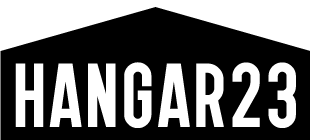
Rouen compte depuis février 2016 une nouvelle salle de concert : la chapelle Corneille Auditorium de Normandie. L'ancienne chapelle du lycée Corneille, bijou architectural sauvé de la démolition, a retrouvé sa beauté d'antan et s'offre une seconde vie en devenant Auditorium de Normandie.
Sept programmateurs se partagent ce lieu exceptionnel : l’Opéra de Rouen, le Poème Harmonique et le Hangar 23, ainsi que la Maison illuminée, Accentus, l’Académie Bach d’Arques-la-Bataille et les Musicales de Normandie.
La particularité de cette salle, c’est que tous les espaces essentiels à son fonctionnement - billetterie, foyer, toilettes - ont été réalisés en sous-sol. Le public entre sur le côté de la chapelle. Une galerie conduit les spectateurs jusqu’à la billetterie, puis jusqu’au foyer. L’accès à la nef se fait par un escalier (il y a aussi un ascenseur pour les personnes à mobilité réduite) qui débouche dans des chapelles latérales.
La scène mobile a 10 mètres de diamètre. Elle est surmontée , à la croisée du transept, d’une sphère acoustique de 6,50 mètres de diamètre, autre particularité de la salle. Équipée de 360 pampilles lumineuses, elle sert à la fois d’éclairages pour la scénographie et de lentille acoustique. Géode unique au monde, elle répartit le son dans l'espace en évitant qu'il se disperse. Aux dires des musiciens qui l'ont testée, "Une belle réverbération d’église, mais contenue et sans les inconvénients habituels". Le traitement acoustique et scénographique du nouvel auditorium a été spécialement conçu pour les chœurs et les ensembles vocaux, la musique baroque et sacrée, les petites et moyennes formations instrumentales, ainsi que la musique de chambre.

Après ce long préambule sur ce lieu étonnant, venons-en au concert : sublime, depuis I vostri sguardi jusqu'à La costruzione delle cose, sans oublier Le lac joué en rappel.
Ce répertoire ne constitue plus une nouveauté pour nous qui l'avons déjà entendu à plusieurs reprises (Cologne, Calvi, Le Mans, sans compter les émissions que Via Stella lui a consacrées), mais c'est un plaisir et une émotion à chaque fois renouvelés et amplifiés que de s'imprégner de ce "Danse mémoire danse".
Ce soir j'ai trouvé que le climat était plutôt calme et recueilli en début de concert, pour devenir débridé quand les interactions entre Paolo et Daniele se sont développées, à l'occasion du morceau en duo, puis sur des morceaux comme U Viandante ou Africa où la fusion des voix, de la trompette et du bandonéon se fait éclatante. Mais la communion est parfaite aussi dans In sempiterna, superbement introduit par Daniele et subtilement ponctué par Paolo, en parfaite harmonie avec le beau texte de Jean-Yves Acquaviva évoquant l'adieu de Jean Nicoli à ses enfants.

Nous retrouvons les chanteurs et Daniele au foyer, où de très nombreux spectateurs s'arrêtent pour congratuler les chanteurs et leur faire dédicacer disques et affiches. A l'évidence, " Danse mémoire danse " a trouvé son public. Un CD est prévu pour le début 2017. Il va sans dire que nous l'attendons avec une grande impatience !
17 mai, Cracovie, Festival EtnoKraków/Rozstaje

29 juillet, Bastia
Répétition avec Fadia Tomb El-Hage avant le concert dans la cour du musée de Bastia.

Et un court extrait de Maroccu biancu capté par Mattea Lacave.
31 juillet, Belgodère
A FILETTA in cuncertu.
Hier soir, dans une église comble, le public présent a vécu un moment d'émotion intense, tant sur le plan artistique que sur le plan humain. Entre les chants, la force et la justesse des paroles de Jean Claude Acquaviva, l'humanisme porté par la poésie, la simplicité à travers la complexité des compositions.
Un concert exceptionnel, à l'initiative, et avec le soutien de la Municipalité.

Source : page Facebook de la Mairie de Belgodère.
19 août, Rencontres de Calenzana
Le groupe A Filetta a complété la journée champêtre du vendredi.
Groupe atypique de la musique Corse, inclassable, sans étiquettes accolées, qui navigue entre theâtre, danse, chants compositions contemporaines.
L'église de Sainte-Restitude était pleine lorsque le concert commença.
Beaucoup de plaisir à écouter cette formation sobre, humble et généreuse dans sa prestation.

8 septembre, Calvi

Octobre : Tournée TUTTI - In Memoriam et Puz/zle
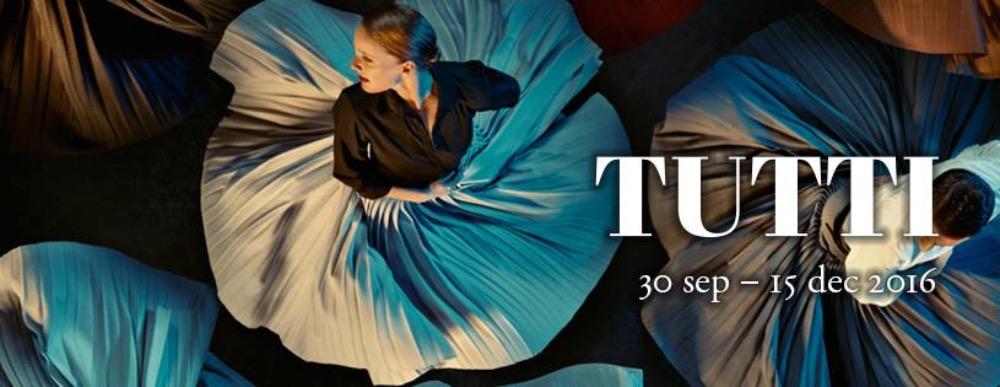
19 décembre, Tournai
Je n'y étais pas, mais Françoise Debeurme a assisté au dernier concert de l'année, organisé par l'association Grossu Minutu, très active dans le Nord. Je lui laisse la parole :
"Église Saint Brice a Tournai (Belgique) ce soir.
Concert d'A FILETTA .. tout simplement fantastique. Église pleine, public attentif, plein d'émotion, un régal.
Le Dio Vi Salvi Regina pour le final, une première avec ce groupe."

![]()
A Filetta
La page officielle d'A Filetta :
http://www.afiletta.com
Pour joindre directement A Filetta :
Contact A Filetta :
contact.afiletta@gmail.com
galerie photo vidéos
concerts 1995-2005 concerts 2006 concerts 2007
concerts 2008 concerts 2009 concerts 2010
concerts 2011 concerts 2012 concerts 2013 concerts 2014
concerts 2015 concerts 2016 concerts 2017 concerts 2018
concerts 2019 concerts 2020 concerts 2021
concerts 2022 concerts 2023 concerts 2024
